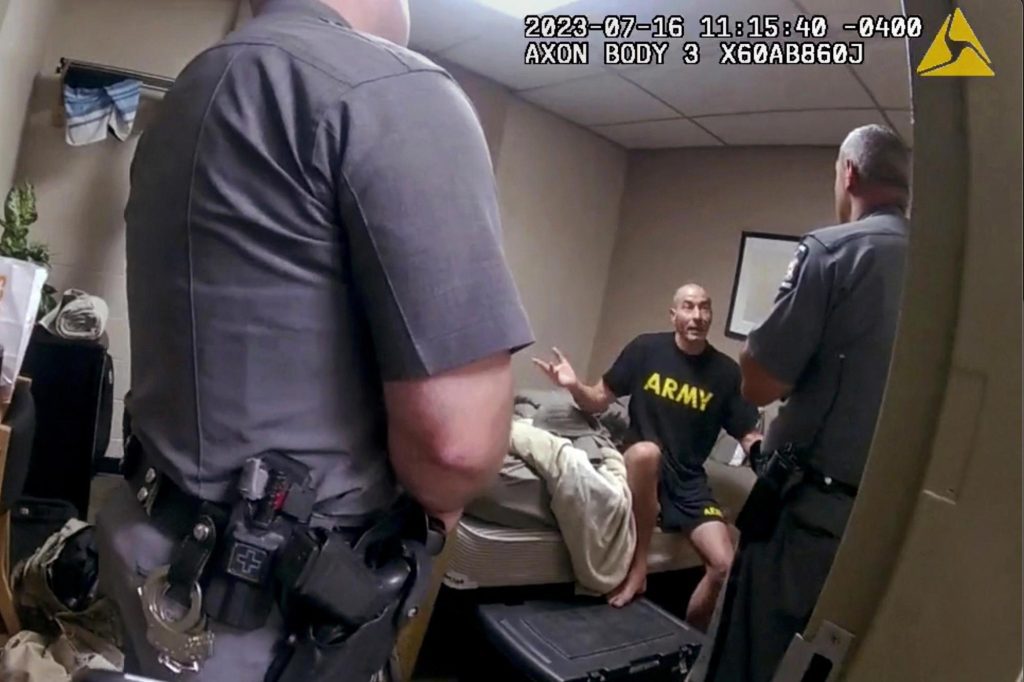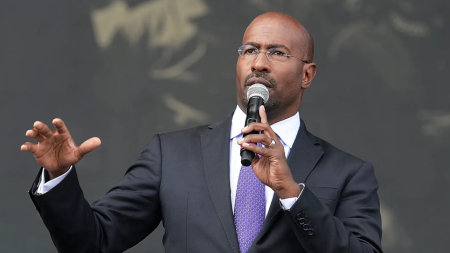By HOLLY RAMER and MICHAEL CASEY (Associated Press)
BOSTON (AP) — Experts who specialize in brain injuries are warning that it's not wise to make conclusions based on the limited information about a brain injury found in an Army reservist who killed 18 people in Maine's deadliest mass shooting last year.
A team of researchers at Boston University examined a sample of Robert Card's brain tissue and announced that they discovered signs of traumatic brain injury. The analysis, which was requested by the Maine medical examiner, revealed degeneration in the nerve fibers responsible for communication between different parts of the brain, as well as inflammation and small blood vessel injury, according to Dr. Ann McKee from the university's Chronic Traumatic Encephalopathy (CTE) Center.
Card had worked as an instructor at an Army hand grenade training range, where it's believed he was exposed to repeated low-level blasts. It's unclear whether this caused Card's brain injury and to what extent it contributed to his declining mental health before he carried out the shooting at a bowling alley and bar in Lewiston on Oct. 25.
McKee did not link the injury to Card's violent actions.
“Although I cannot say for sure that these pathological findings are the cause of Mr. Card’s behavioral changes in the last 10 months of life, based on our previous work, it's likely that the brain injury played a part in his symptoms,” McKee stated in a release from the Card family.
Dr. Alexandra Filippakis, a neurologist who has treated military personnel and others for traumatic brain injuries, stated that she wouldn't conclude that Card's behavior was influenced by the brain injury based on McKee's description of her findings.
“Traumatic brain injury is a very broad diagnosis, and it manifests differently in different individuals. Not everyone experiences the same symptoms, nor the same severity of symptoms,” Filippakis explained. “It's not possible to definitively connect it to a specific action.”
Filippakis, who works at Wentworth-Douglass Hospital in Dover, New Hampshire, mentioned that the connectivity damage described by McKee is common and can be caused by various factors, including aging, high blood pressure and smoking.
“That could have numerous interpretations,” she said. “You definitely can't draw any conclusions from that piece of information.”
However, James Stone, a radiologist at the University of Virginia who has studied repeated low-level blast exposure in the military, remarked that the changes to Card's brain appeared to be significant.
According to Stone, such injuries can impact impulse control and emotional regulation, and even though he isn't sure if those parts of Card's brain were affected, “it's certainly hard to imagine that the level of brain changes that we’re seeing in some way did not contribute to his behavior.”
Chris Dulla, a professor and interim chair of neuroscience at Tufts School of Medicine, expressed surprise that researchers did not find any evidence of chronic traumatic encephalopathy, which has affected many professional football players.
“It doesn't seem to be as straightforward,” he said. “What this indicates is how diverse traumatic brain injuries are, and how challenging they can be to diagnose, even in a postmortem brain sample, when you can study every detail.”
Dulla said the findings show the link between brain injuries and underlying psychological conditions.
He said that if someone is already having a hard time with a psychiatric condition or is at risk for one, a brain injury might be the thing that pushes them over the edge and makes the condition more noticeable, when it might have been not as bad before.
According to experts, a traumatic brain injury can cause headaches, mood changes, memory problems, and sleep disturbances. Stone mentioned that his research has revealed that even exposure to minor blasts can bring about changes in the brain. He added that the Department of Defense is very involved in researching this issue, and a panel he is part of is expected to release new guidelines in May for both the U.S. military and NATO allies.
He said that the Department of Defense has been very active in addressing this.
A spokesperson for the Army expressed concern about the lab findings regarding Card and emphasized the Army's need to do everything possible to protect soldiers from blast-induced injury.
Apart from updating the guidance on risk reduction, the Army plans to start a public safety campaign and will begin requiring documentation of training environments and tracking of exposed personnel.
Hodgson, Card’s close friend and fellow reservist, mentioned that safety was a top priority at their training range and the blast exercises were well controlled.
He said, “You feel it throughout your body, but it's not severe.”
Hodgson stated, “In my opinion, it's one of the safest ranges to be on. Robert never complained about the blasts.”
Six weeks before the shooting, Hodgson texted an Army supervisor expressing his growing concerns about Card, saying, “I think he's going to snap and commit a mass shooting.”
That message on September 15 came months after relatives alerted police that Card had become paranoid and they were worried about his access to guns.
In July, Card spent two weeks in a psychiatric unit after pushing a fellow reservist and locking himself in a motel room. In August, the Army prohibited him from handling weapons while on duty and deemed him not fit for deployment.
In their first public comments since the shooting, Card’s family apologized for the attack, expressing their sadness for the victims, survivors, and their families.
They stated, “We are hurting for you and with you, and it is hard to express how much we wish we could undo what happened. While we can't go back, we are sharing the findings of Robert’s brain study in the hope of aiding ongoing efforts to learn from this tragedy and ensure it never happens again.”
___
Ramer reported from Concord, New Hampshire.









